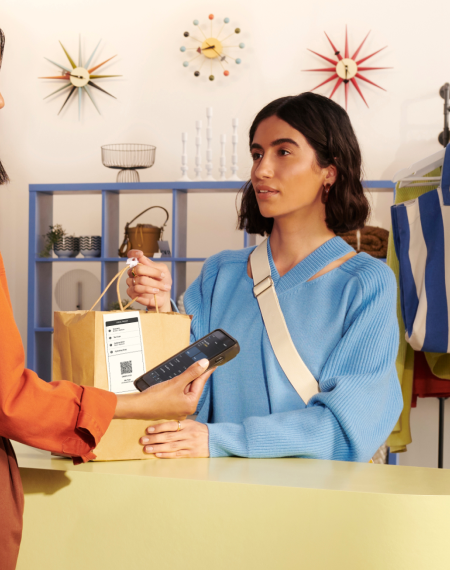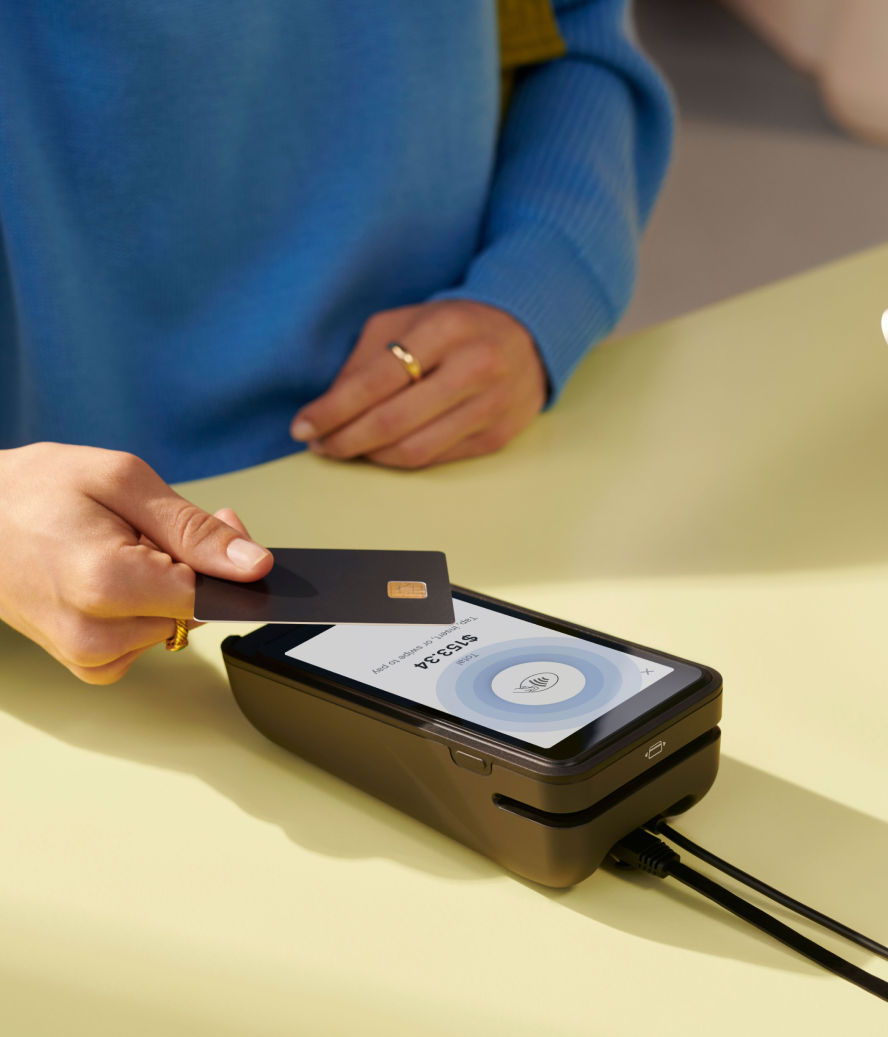You have an idea of what you want your retail business to look like. You believe in the idea and it’s been validated by potential customers. But the cost of turning that vision into reality is often intimidating.
Opening a retail store can be expensive. How much you spend on your lease, inventory, setup, and staffing all play a role in how quickly your store turns a profit.
This guide will show you exactly what to expect before you commit to opening a store, as well as the factors that influence initial startup costs and techniques to bring expenses down.
Table of contents
How much does it cost to open a retail store?
Studies show that the average cost of opening a retail store is $39,210. However, this cost depends on various factors, such as the location and size of your store, the furnishings required to fit it out, what type of inventory you’re selling, and how many people you employ.
Factors impacting the cost of opening a retail store
Location
Location is everything in the world of retail—and not just because it impacts how easily customers can visit you. Where your store is located affects how much you can expect to spend on rent, utilities, and insurance.
For example, malls have the highest rental real estate cost, at $33.35 per square foot, because they offer the advantage of regular foot traffic and reliable parking. That said, malls can work out more cost effective than other locations since some shopping centers include additional costs—like security, parking, and maintenance fees—in their retail lease at a discounted rate.
Store size
Retail property owners charge for every square foot of available space. Statista reports that the average retail space costs $21.85 per square foot, though a larger store also comes with higher utility costs (water, heating, lighting, and gas).
Keep in mind that you’ll require more square footage than just your shop floor. You’ll also need space for inventory storage, merchandising displays, and the checkout desk.
If you can’t afford a larger space, cut down your square footage requirements by:
- Installing a mobile point-of-sale (POS) system
- Using vertical shelving units to maximize height
- Employing the endless aisle strategy
💡Pro tip: Shopify Payments turns your smartphone into a portable POS device. There’s no need to have a fixed, bulky checkout desk. Retail staff can ring up orders, reference customer data, and take payment from anywhere in-store.

Inventory
The cheapest way to source inventory is from a reputable wholesale supplier. The majority offer bulk discounts, meaning that the cost per unit becomes cheaper with economies of scale.
Shopify data found that product costs are the biggest expense, accounting for almost a third of a business’s annual expenses in their first year of operation. Some 21% of entrepreneurs said that these costs could quickly (and unexpectedly) rack up.
Luckily, initial inventory costs tend to go down after your first year in business. Being on good terms with your suppliers can help you negotiate lower costs. Knowing exactly what your customers buy can also help you make smarter inventory decisions, like only restocking items that sell out to avoid obsolete stock.
Permits and licenses
There’s a lot of administrative work involved in opening a retail shop. Aside from finding your spot and kitting out the store, many local authorities require sellers to obtain permits and licenses before you can open your doors to the public.
This includes:
- Seller’s permits, which you’ll usually need to collect sales tax if you operate within specific states and sell goods that are subject to sales tax. The application fee for a seller’s permit costs between $0 and $100, depending on your state.
- Business registration fees, which makes the business a separate legal entity from yourself. Filing fees range between $50 and $300, depending on your chosen business structure and state.
- Commercial insurance, which protects you from risks such as theft and injury to shoppers in your store. Per Insureon, retailers tend to pay around $65 per month for retail insurance. Some specialty stores, such as convenience and thrift stores, pay higher premiums.
- Business license, a government-issued document that says you’re allowed to operate your store. Not all retailers require a license. If you do, filing fees can range from $50 to a few hundred dollars.
Our study found that operating costs—like legal fees, accounting software, and incorporation fees—account for 11% of a business’s annual expenses in their first year of trading. Almost a quarter of entrepreneurs said these were unexpectedly expensive.
Fixtures and fit-out costs
Most retail spaces are empty shells. You’ll need to invest money into kitting out your store and turning it into a friendly, functional, and aesthetically pleasing place to shop.
Depending on the size of your fit-out project, you might need to budget for:
- Design and consultancy fees
- Construction and building work
- Lighting systems
- Heating, ventilation, and air conditioning systems
- Furniture, such as shelving units
- Retail signage
- Security systems
A recent report that surveyed general contractors in central business districts found that the average fit-out cost for a retail store is $147 per square foot. Costs tend to be higher for retailers in Northern California ($216 per square foot) and cheaper in the Midwest ($106 per square foot).
POS system
A POS system is the hardware and software that allows you to process transactions in-store. More than a device for ringing up orders, a unified POS system like Shopify lets you retrieve customer data, update inventory levels, and process a variety of payment methods that offer an omnichannel experience for your customers.
Initial POS system setup costs can range between $0 and $2,000. Most vendors calculate their prices based on your customized setup. Here’s a rough idea of how this is calculated:
- POS software ranges from $0 to $89 per month. Vendors that offer free POS systems often take a higher percentage of your sales plus a payment processing fee as a trade-off for a fixed monthly fee. These free options can end up costing you more in the long run.
- POS hardware can be free (either through rental or using your smartphone) or a one-off cost of up to $500.
- Installation fees range from $0 to $1,000.
Before you choose a POS system, consider the vendor’s total cost of ownership (TOC). A recent study conducted by EY that analyzed transactional data from more than 3,800 businesses and surveyed senior leaders at more than 600 retail organizations and agencies, found that Shopify POS delivers 22% better TOC, on average, compared to competitors.
Canadian retailer Frank and Oak moved to Shopify Plus to unify its online and in-person operations. It has since reduced operating expenses associated with its POS by 47% and cut transaction fees by almost 3%.
“Unifying our commerce stack on Shopify has noticeably improved our omnichannel customer experience and our bottom line,” says chief omnichannel officer Guillaume Jaillet. “We’re spending less on technology, there’s greater synergy between our sales channels, and we’re cultivating more loyalty and engagement at every level of interaction.”

Payment processing
Credit card payments have quickly overtaken cash as the preferred payment method for retail consumers. Your POS system should let you process these transactions in-store, either through their native payment gateway or a third-party processor that will take a percentage of each transaction as payment for their service.
Payment processing fees range from 2.4% to 2.7% per transaction, though some payment methods and banks are more expensive to process than others.
💡Pro tip: Shopify Payments is included in all POS plans without any additional setup fees. Accept mobile wallets, contactless, and chip-and-pin transactions from your POS system. Shoppers can even opt to pay for in-store purchases in monthly payments with Shop Pay Installments.
Advertising and marketing costs
Marketing and advertising drives people toward your brick-and-mortar store. There are free tactics you can use, like writing press releases or posting on social media. Yet putting some budget behind your campaigns can accelerate results.
Shopify’s study found that businesses tend to spend between 7% and 12% of their first year’s expenses on marketing. However, the more money a business makes, the more it spends on marketing. This makes sense: extra profits give you more money to spend on acquiring new customers.
Staffing
Chances are, you can’t operate a retail store single handedly. Here are the retail roles you might fill and how much you can expect to pay for each:
- Retail sales associates: $15.40/hour
- Customer service representatives: $14.06/hour
- Store managers: $19.11/hour
- Inventory specialists: $19.19/hour
- Buyers: $24.18/hour
Remember that it’s not just staff salaries that influence costs. The Small Business Administration estimates that staff costs are 1.25 to 1.4 times their average salary after taking insurance, benefits, and taxes into account.
As for how much this costs over the course of a year, Shopify found that the average business spends 18.8% of its annual expenses on staffing costs like salaries, training, taxes, insurance, and benefits. This tends to be higher in the business’s first year of trading, accounting for almost a third of their total budget.
💡Pro tip: Reduce onboarding and training costs by opting for an easy-to-use POS system. Shopify POS, for example, has proven to reduce upfront training and onboarding costs by 21% per retail store. Brands like Monos even managed to reduce POS training times to just a half-day.
“We train our retail staff not only on POS but the full online experience as well, which helps them understand how everything like order processing, refunds, and promotions work,” says Mike Wu, director of ecommerce and customer experience at Monos. “Having it all on the same platform makes it much easier to connect the dots and gain a full understanding of the business, which results in better customer service.”
Ongoing store expenses
Once you’ve paid out the initial setup costs to open a new retail store, there are ongoing expenses you’ll need to account for in your retail business plan:
- Utilities: Retailers spend between $500 and $2,000 per month on utilities like gas, water, and electricity. Opt for energy-saving alternatives like LED lighting and smart thermostats to reduce these expenses.
- Online store costs: Most retailers also sell online to reach a wider audience. Our study found that online store costs like web hosting and website design accounts for 9% of a business’s annual expenses. Platforms like Shopify let you get started for as little as $5 per month.
- Shipping: If you’re running your own retail store in conjunction with an ecommerce site or shipping items from your POS to customers’ homes, budget for shipping costs such as packaging supplies and labels. Our study found the average business spends 8.7% of their annual expenses on shipping in their first year.
- Cleaning and maintenance: Whether a piece of furniture gives way or your store starts to get dirty, it costs money to keep things in top condition. Actual costs vary depending on the size of your store and the equipment or machinery you’re maintaining.
- Professional services: Sometimes it makes sense to outsource retail tasks that aren’t your specialty, but these come at a cost. For example, accountants or bookkeepers who help file taxes charge $38.41 per hour, on average.
Things to consider before opening a retail store
Foot traffic
Location plays a role in how much you can expect to pay to operate your new store. But there’s more to scouting for retail space than cost cutting. Sometimes, the higher monthly rent for a prime downtown location can actually help you make more money. A place with high foot traffic can help you cut down on marketing and advertising costs.
Security considerations
Before you commit to a retail lease, consider the security of your chosen location. You might have to pay extra costs—like a CCTV system, higher business insurance premiums, and replacement inventory—if the area is a prime target for retail theft.
Also think about proactive measures you can take to protect your store from theft. Commit to regular staff training and implement retail technology like RFID tags to keep your stock safe.
Financial planning
Aside from the planned costs outlined above, there may be unexpected expenses you’ll have to account for in financial management—like expanding a product line due to high demand.
It helps to have 12 months of operating expenses saved up before opening your retail store. This doesn’t have to be your personal savings. Consider business financing options like Shopify Capital. It gives you access to immediate cash with a small business loan that you’ll automatically pay back as a percentage of sales.
Regulatory compliance
There are laws and regulations that protect customers when they’re shopping in retail stores. You must follow these rules to remain compliant with laws and offer an inclusive retail environment. Failing to do so can result in fines.
Generally speaking, retailers are required to remain compliant with:
- ADA requirements, which ensures that people with disabilities can navigate your store; use wide aisles, opt for ramps instead of stairs, and add closed-captioning subtitles to any video signage
- Employment law, which protects staff from discrimination, poor pay, and unsafe working conditions
It’s always worth enlisting the help of a legal specialist when navigating the world of compliance. Different regions will have different requirements—the only way to know which laws apply to your business is to consult a legal professional.
Supply chain management
The retail supply chain describes how you’ll produce, receive, and ship inventory to your customers. While it might not sound like the most glamorous of topics, supply chain comes with its own set of challenges and associated costs.
Shopify unifies your front- and back-end operations to reduce costs and give you a complete commerce operating stack that grows with your business. For example, you can:
- Offer omnichannel shopping experiences like buy online, pickup in-store and ship-to-home
- Buy discounted shipping labels with Shopify Shipping
- Automate like warehouse management processes such as generating picking slips and flagging orders from customers who’ve paid for expedited shipping
- Offer real-time shipment tracking through the Shop App
- Integrate inventory and order data with a third-party logistics (3PL) partner’s warehouse management app
Open your retail store with Shopify
A retail store is a great way to connect with customers and showcase your products in the flesh. And if you manage to find a retail location with low ground rent while keeping other costs low, it won’t take long to turn a profit.
The infrastructure you’re relying on to power your retail store plays a major role in how much you can expect to spend. Shopify’s unified commerce functionality, for example, helps merchants achieve 13% lower implementation and integration costs compared to other POS vendors, on average.
How much does it cost to open a store FAQ
How much money do you need to open up a shop?
It costs almost $40,000 to open a retail store, but it’s possible to start one on a smaller budget. Choose an out-of-town location, negotiate favorable terms with suppliers, and work on the fit-out yourself to reduce retail store startup costs.
Is it profitable to open a retail store?
Retail stores can be profitable, but you’ll need to maximize profit margins on each product and reduce your operating costs. A unified commerce platform like Shopify makes it easier to track and improve profitability by showing all of your data in one place.
How much does it cost to start a small business?
Shopify’s study found that it costs $40,000 to start a small business. Product, staffing, and operational costs (like insurance, legal fees, and accounting) tend to be the biggest expenses in your first year.





